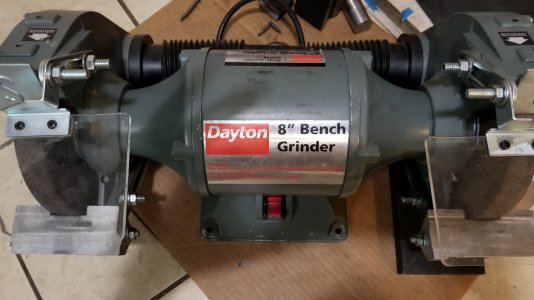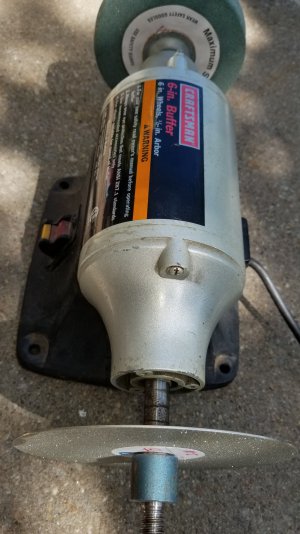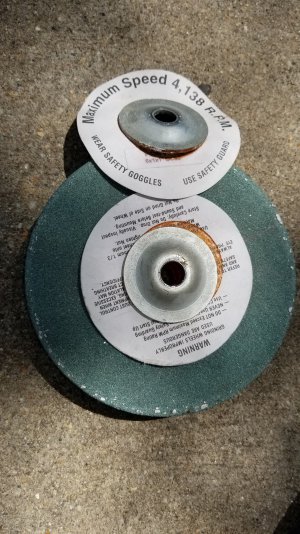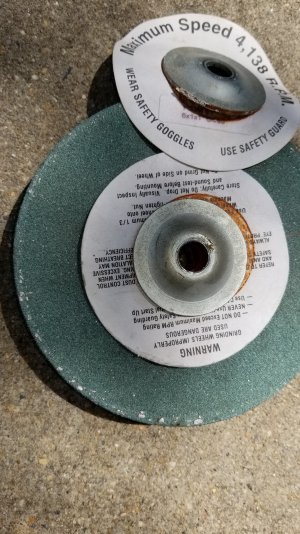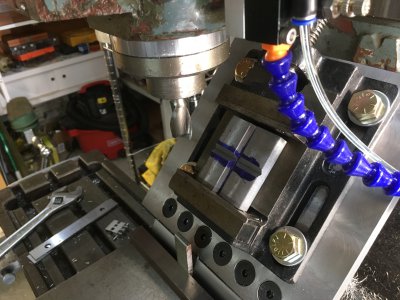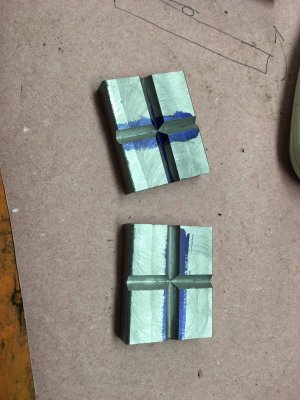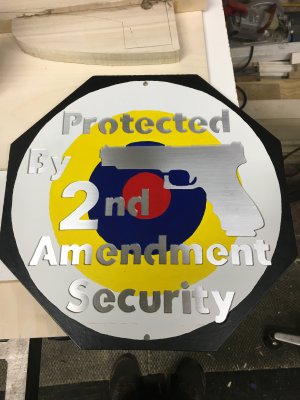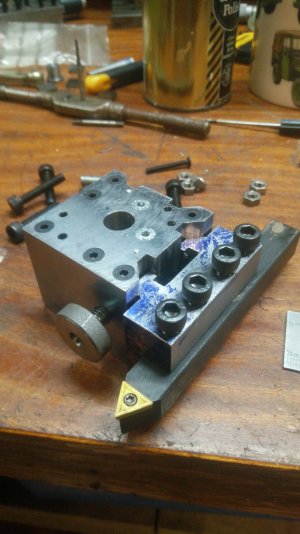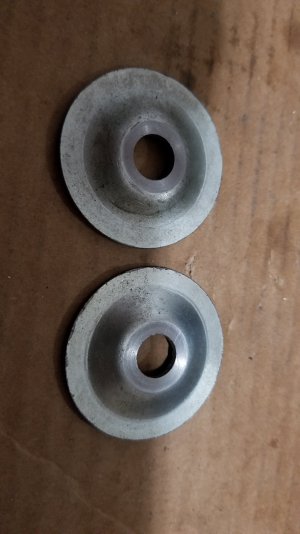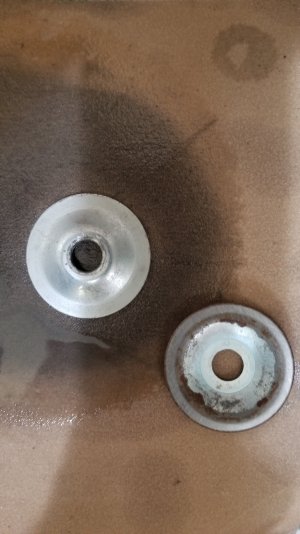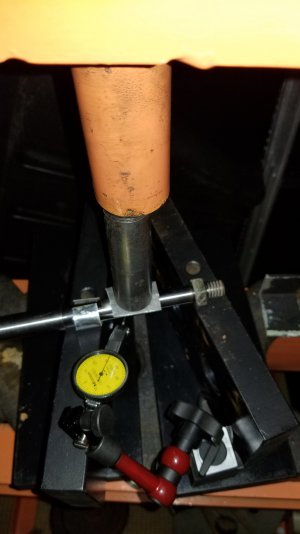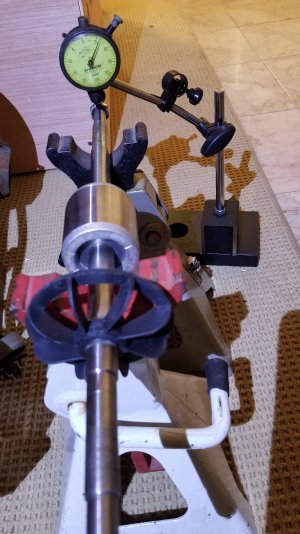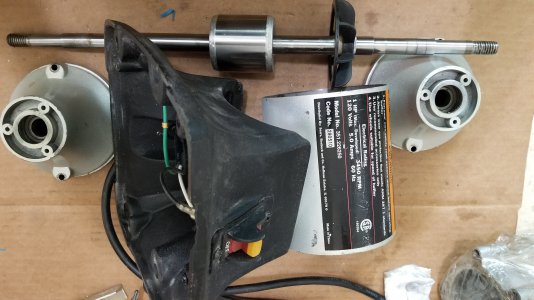I have been using a similar setup for years to sharpen carbide lathe tools. A 6" bench grinder running at 3,500 rpm with a diamond wheel bonded to steel. I run mine dry and make sure the direction of the wheel is towards the cutting edge which reduces micro chipping of the edge. Don't use the diamond wheel on steel; it's not effective, nor good for the wheel. On brazed carbide tools, relief grind the steel with a regular wheel, then grind the carbide only with the diamond wheel. I would like to see more pics when done.
Thanks. I was making a backing plate for it, but then think through this again, and I have to shelf the grinder. There are too many things to fab for this, especially the safety cover, while I am in the middle of other projects. I also have other "complete" grinder that I should get them to working perfectly.
Other than that, I was looking at a few way to true these things up. This grinder has about 2 to 3 thous off.
A little update on this ... I ended up taking out a grinder that I was rebuilt before. It had a run out issue. One was 2 thous, and the other was 5 I think. I took it apart and used a press to true both of them. The 5 thous end now is about 1/4 thous, while the 2 thous is now 1/2 thou. This would have been super easy to do when I was rebuilding it, but that's when I didn't know much about grinder. I just finished putting it back, but now need to get a better electrical cable for it since the segment inside case, it melts. The motor says 10.5 amp.
Update 2: I checked the side edge of the shaft for play and use a file to true it up. I am not quite sure, but I think maybe it's good to about 2 thous. I regret not put the motor rotor and shaft in a lathe to true it up. That would be much quicker and better. I also took the 4 wheel flanges and cut a very thin slide off the center on a lathe to true it up.
I saw some make the flanges themselves, which has tighter inner radius and thicker. Before, the grinder would walk, but now it is still. However, a nut still fall off if I put it on top of the motor.
I put thin painter tape around the plastic shaft adapter. That gives a tight fit. I tried to do the same on the shaft. It was close, but not close enough to get the adapter on it. Making dedicated adapter out of steel or aluminum would work good. I may do that someday if this grinder doesn't give a good result.
I am very happy with it though, since I didn't dress the wheels yet. They're visibly out of round when I turn them.
Comparing the dressing wheel with diamond dressing T stick, which would be better, or they have their purposes. I feel like the wheel is better at removing coarse wheel with large amount, while the T stick is for finer dressing, but that's a guess. In your experience, what would you use?
Here is the grinder I was working on. Have been put it off for years
